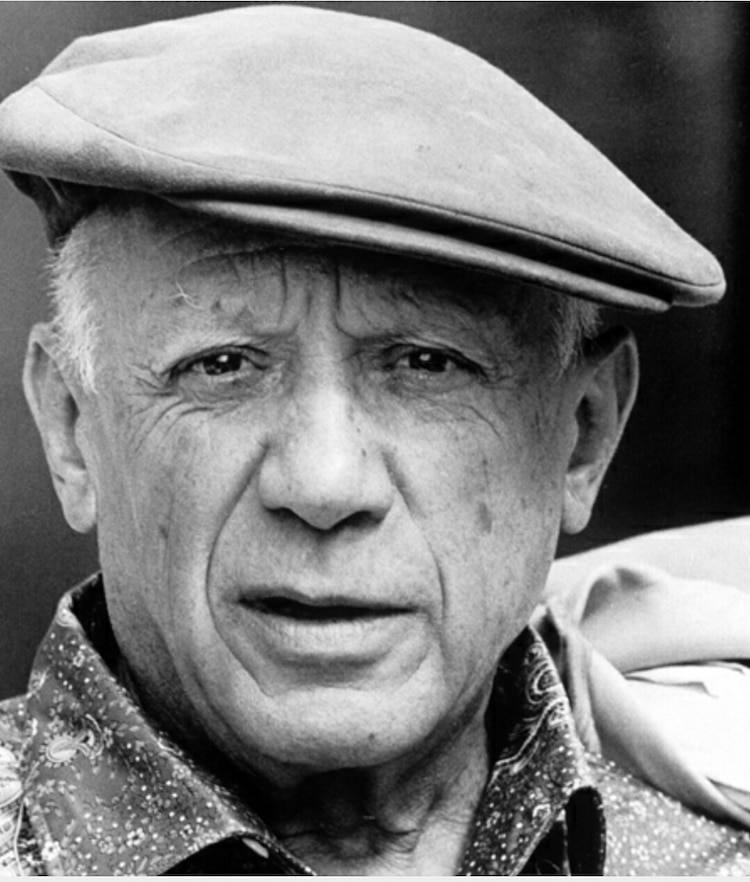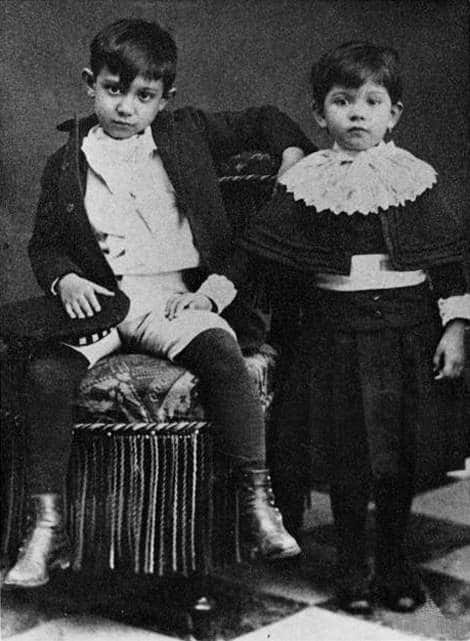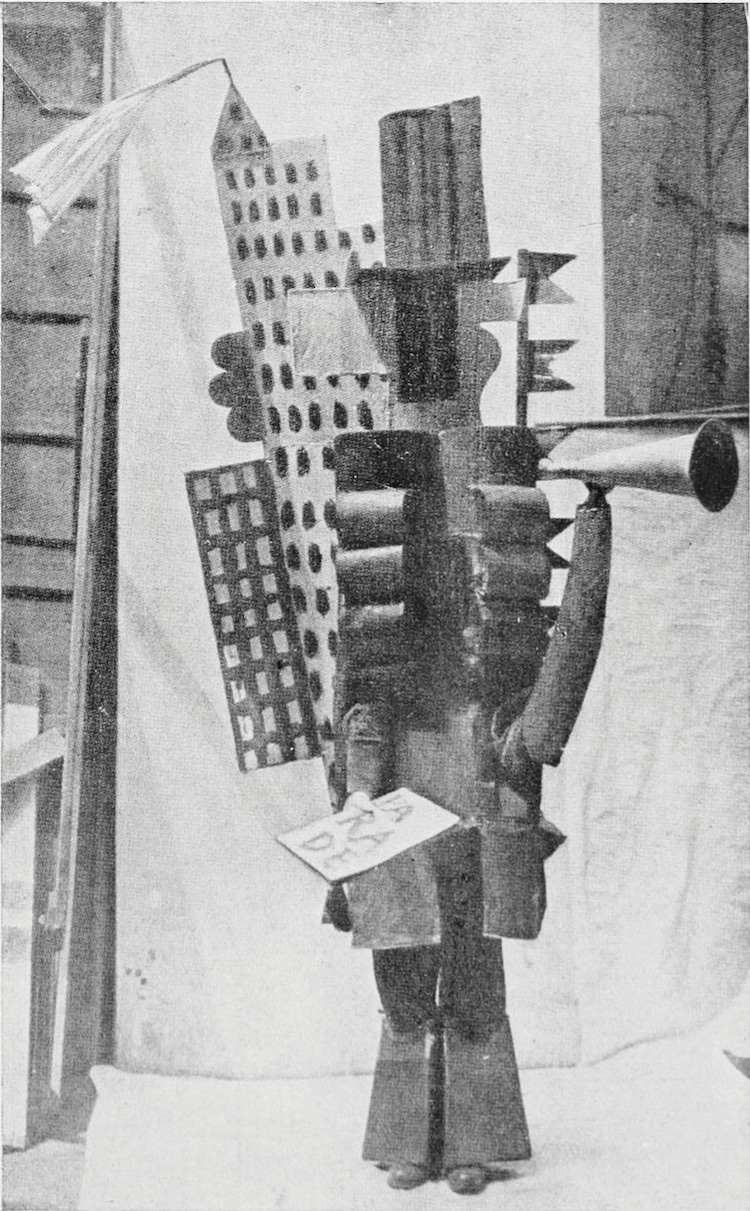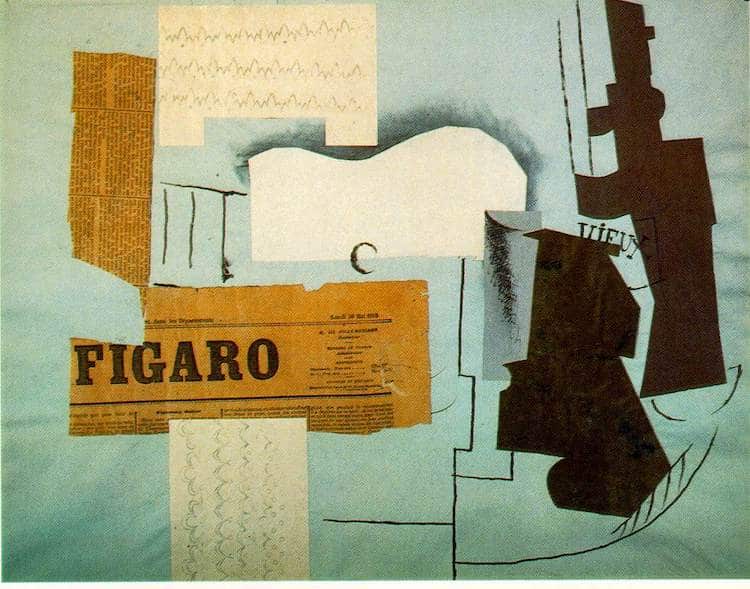
Picasso in 1962. (Photo: Argentina. Revista Vea y Lea [Public domain], via Wikimedia Commons)
This post may contain affiliate links. If you make a purchase, My Modern Met may earn an affiliate commission. Please read our disclosure for more info.
As one of the most important artists of the 20th century, Pablo Picasso has been the topic of numerous books and films. The acclaimed artist lived his life the fullest, remaining active and creative up until his death in 1973 at the age of 91. Perhaps most well known as one of the founders of Cubism, Picasso was a prolific artist, moving through many periods and styles during his lifetime. And, as is often the case with geniuses, his personal history is just as interesting as his artwork.
Picasso was a child prodigy, and his artistic output began at a young age. Born in 1881, the Spanish artist was greatly influenced by Diego Velazquez and Francisco Goya (master painters from his own country), but he later moved to Paris. He would spend most of his adult life in France, soaking in influences from around the globe, whether that be the post-Impressionist work of Cézanne or African artifacts.
There are many fascinating details of Picasso’s life that help enrich understanding of his artwork. A highly complex, if not difficult, individual, many events have shaped his life and legacy. To gain an even deeper understanding of Picasso, read on to learn 10 facts that may surprise you about this famous artist. To learn even more, you can pick up a copy of Patrick O’Brian’s acclaimed biography of Picasso.

Picasso with his sister Lola in 1889. (Photo: Public domain, via Wikimedia Commons)
1. Pablo Picasso’s full name is much longer than you’d think.
The name Pablo Picasso is an alliterative delight, but the artist’s full name is a real tongue twister. Baptized Pablo Diego José Francisco de Paula Juan Nepomuceno María de los Remedios Cipriano de la Santísima Trinidad Martyr Patricio Clito Ruíz y Picasso, his full name consists of 23 words. The names are based off a list of saints and relatives. Interestingly, his famous last name comes from his mother, María Picasso y López.
Explaining the choice to adopt his mother’s surname, he said, “[Picasso] was stranger, more resonant, than ‘Ruiz.’ And those are probably the reasons I adopted it. Do you know what appealed to me about that name? Well, it was undoubtedly the double ‘s,’ which is fairly unusual in Spain. Picasso is of Italian origin, as you know. And the name a person bears or adopts has its importance. Can you imagine me calling myself Ruiz? Pablo Ruiz? Diego-José Ruiz? Or Juan-Népomucène Ruiz?”
2. His first words as a child foreshadowed his future.
While most children’s first words are “mama” or “dada,” Picasso was a true artist right from the start. Picasso’s mother said that his first word was “piz” which is short for lápiz—the Spanish word for pencil. It’s no wonder that his family started his art education early!

“The Picador,” 1890 (Photo: Public domain via Wiki Art)
3. As a child prodigy, Picasso finished his first painting at 9 years old.
Picasso’s father José Ruiz y Blasco was a painter and art teacher who quickly picked up on the fact that his son was special. He began Picasso’s art education at 7 years old. Ruiz was a strict academic who believed that artists should learn by copying the great masters, as well as plaster casts and live models. Picasso’s early pencil drawings and oil paintings show how skilled he was as a child.
His earliest painting, The Picador, was completed when he was just 9 years old and by 13 he had been admitted to the School of Fine Arts in Barcelona. Incredibly, he’d been able to complete the rigorous entrance exam, which typically took one month to complete, in just a week.
4. Picasso’s father gave up art after seeing the talents of his son.
Though Picasso’s father was a skilled artist, teaching at the Barcelona School of Fine Arts, it’s said that he was in great awe of his son’s talent. Ruiz specialized in drawings of doves and pigeons and when Picasso was just 13 years old, his father walked in on him painting over Ruiz’s unfinished sketch of a pigeon. He was so impressed by the work that he declared he would give up painting, as his son had surpassed him. There are later paintings by Ruiz, so clearly he didn’t give up completely. Father and son would continue to have a volatile relationship, arguing frequently.

Costume design by Pablo Picasso representing skyscrapers and boulevards, for Serge Diaghilev’s Ballets Russes performance of Parade at Théâtre du Châtelet, Paris 18 May 1917. (Photo: Public domain via Wikipedia)
5. He was much more than just a painter.
Picasso didn’t just paint, he was also a sculptor, ceramicist, poet, playwright, and set designer. In terms of set design, Picasso began a collaboration with the Paris-based company Ballets Russes during World War I. He designed Cubist sets and costumes for several productions, which have become more celebrated over time. The collaboration is also where Picasso met his first wife Olga Khokhlova, who was a dancer in the company. Poetry came to Picasso later in life, with him beginning to write in earnest in 1935, after the end of his first marriage. Between 1935 and 1959 he wrote over 300 poems. In the 1940s he wrote two full-length plays, Desire Caught by the Tail and The Four Little Girls. Both were surrealist works written in a stream of consciousness style.
6. He was once suspected of stealing the Mona Lisa.
In 1911, when Picasso was 29 years old, Leonardo da Vinci’s Mona Lisa was stolen from the Louvre. French poet Guillaume Apollinaire was brought in as a suspect and implicated his friend Picasso, which led to the artist being brought in for questioning. Both men were eventually exonerated. Two years later it was discovered that an Italian Louvre employee, Vincenzo Peruggia, stole the painting because he believed that it belonged in an Italian museum.

“Bottle of Vieux Marc, Glass, Guitar and Newspaper,” 1913. Collage, ink, and paper. (Photo: Public domain via WikiArt)
7. Picasso helped invent the modern collage.
Together with Georges Braque, the co-founder of Cubism, Picasso invented collage as we now know it. In fact, the term comes from the French word coller, which means “to glue.” Picasso fully embraced this technique, gluing fragments of wallpaper and newspaper clippings alongside his paintings. He was the first artist to incorporate collage into fine art, continuing his legacy of breaking rules within the art world and introducing new methods to express his creativity.
8. He is the World’s Most Prolific Painter.
With a career that lasted over 75 years, Picasso had plenty of time to create—and create he did. Picasso didn’t just produce artwork, he oozed creativity and used every opportunity to produce material. According to the Guinness Book of World Records, he created 13,500 paintings and designs, 100,000 prints and engravings, 34,000 book illustrations, and 300 sculptures and ceramics. No other artist has come close to being so prolific during their lifetime.

“Olga in an Armchair,” 1918. (Photo: Public domain via Wikipedia)
9. No artist has had more artwork stolen.
Given the sheer quantity of artwork Picasso produced, it should come as no surprise that he also holds the record as the artist with the most artwork stolen, missing, or in dispute. In 2012, the Art Loss Register listed 1,147 stolen works by Picasso. Some high profile heists include the 2010 theft of a Picasso painting, along with five works by other artists, from the Musée d’Art Moderne in Paris. During the 2017 trial, the perpetrator declared that he’d thrown the paintings in the dump and was sentenced to 8 years in prison.
In 2016, billionaire art collector Wilma Tisch sued a Florida art dealer when she realized that her 1929 Picasso painting was for sale in his gallery. Tisch’s collection was so large that she hadn’t noticed that the painting had gone missing, plucked from the walls by a former housekeeper, who sold it to the dealer. Judges later ordered the artwork returned to its rightful owner. Unfortunately, with Picasso’s artwork continuing to go for big money at auction, thefts will continue to be an issue.
10. He was a well-known womanizer.
To say that Picasso had a complicated relationship with women is an understatement. Picasso was married twice, but had many lovers throughout his life and left behind four children by three different women. His first wife Olga stayed married to him until she died in 1955, though they had been separated since 1935 when Olga discovered his affair with 17-year-old Marie-Thérèse Walter. As Picasso refused to divide his estate with Olga, per French law, she had no choice but to remain legally married to him.
Many of Picasso’s mistresses were much younger, including Françoise Gilot. She was just 21 years old when she met Picasso, who was 40 years her senior. She served as his muse and they stayed together for 10 years, having two children. Her memoir, Life with Picasso, details their tumultuous relationship. Picasso’s many romantic relationships meant that he left behind a dysfunctional family. The painter’s second wife, Jacqueline Roque, refused to let his children by Gilot attend his funeral. Roque would later commit suicide, as would Marie-Thérèse, the mistress who broke up his first marriage.
Related Articles:
8 Facts About Picasso‘s Groundbreaking Painting ‘Les Demoiselles d‘Avignon‘
Evolution of Picasso’s Iconic Self-Portraits From Age 15 to 90
8 Real-Life People Who Became the Stars of Art History’s Most Famous Paintings
